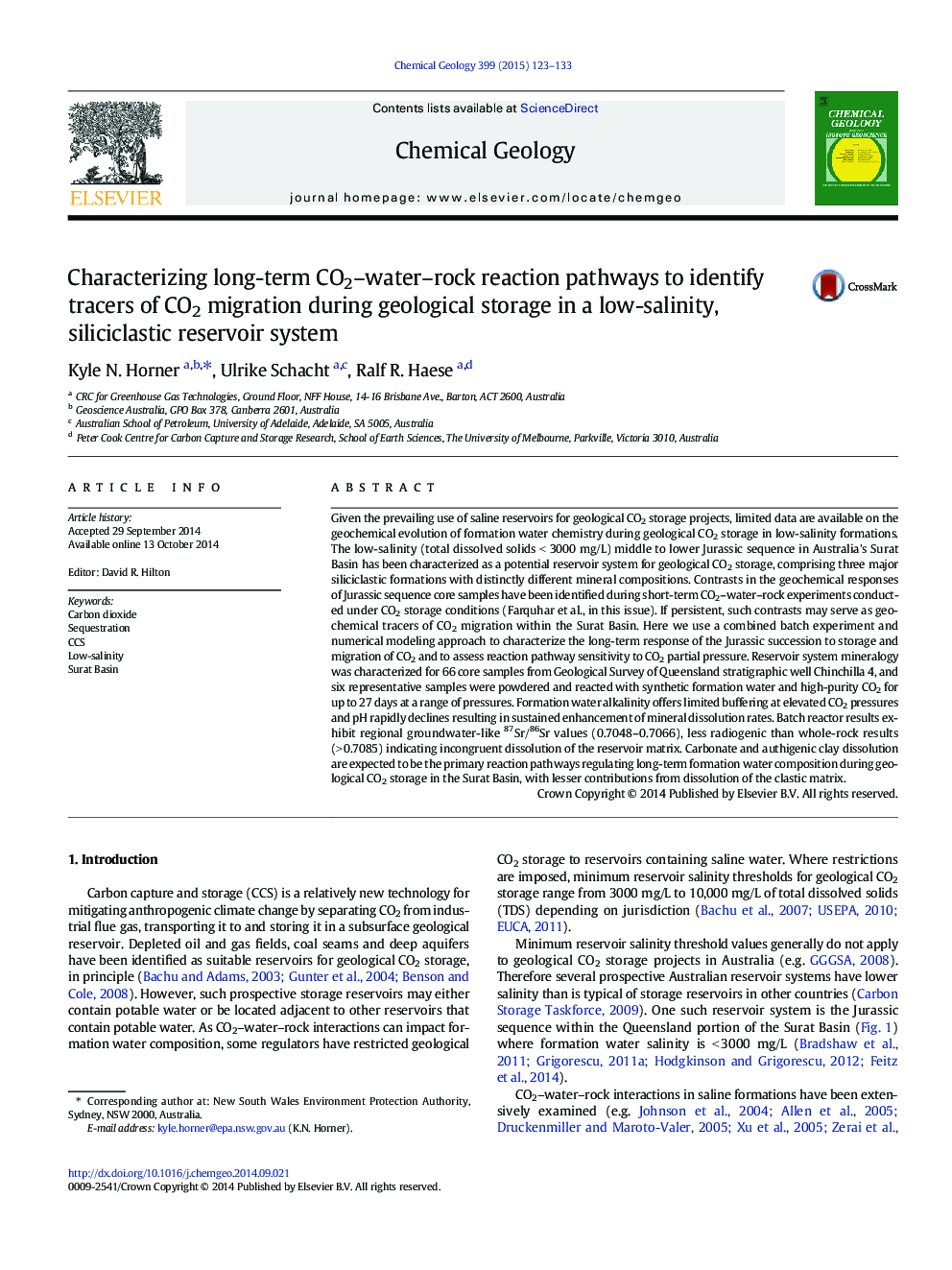| Article ID | Journal | Published Year | Pages | File Type |
|---|---|---|---|---|
| 4698601 | Chemical Geology | 2015 | 11 Pages |
•CO2–water–rock interactions are studied for low-salinity, siliciclastic reservoirs.•Reaction pathways are assessed via batch experiments and geochemical modeling.•Experimental conditions span range typical for geological CO2 storage.•High CO2 solubility, low alkalinity cause rapid acidification at all pressures.•87Sr/86Sr, major elements show carbonate/clay dissolution to be key reaction pathways.
Given the prevailing use of saline reservoirs for geological CO2 storage projects, limited data are available on the geochemical evolution of formation water chemistry during geological CO2 storage in low-salinity formations. The low-salinity (total dissolved solids < 3000 mg/L) middle to lower Jurassic sequence in Australia's Surat Basin has been characterized as a potential reservoir system for geological CO2 storage, comprising three major siliciclastic formations with distinctly different mineral compositions. Contrasts in the geochemical responses of Jurassic sequence core samples have been identified during short-term CO2–water–rock experiments conducted under CO2 storage conditions (Farquhar et al., in this issue). If persistent, such contrasts may serve as geochemical tracers of CO2 migration within the Surat Basin. Here we use a combined batch experiment and numerical modeling approach to characterize the long-term response of the Jurassic succession to storage and migration of CO2 and to assess reaction pathway sensitivity to CO2 partial pressure. Reservoir system mineralogy was characterized for 66 core samples from Geological Survey of Queensland stratigraphic well Chinchilla 4, and six representative samples were powdered and reacted with synthetic formation water and high-purity CO2 for up to 27 days at a range of pressures. Formation water alkalinity offers limited buffering at elevated CO2 pressures and pH rapidly declines resulting in sustained enhancement of mineral dissolution rates. Batch reactor results exhibit regional groundwater-like 87Sr/86Sr values (0.7048–0.7066), less radiogenic than whole-rock results (> 0.7085) indicating incongruent dissolution of the reservoir matrix. Carbonate and authigenic clay dissolution are expected to be the primary reaction pathways regulating long-term formation water composition during geological CO2 storage in the Surat Basin, with lesser contributions from dissolution of the clastic matrix.
